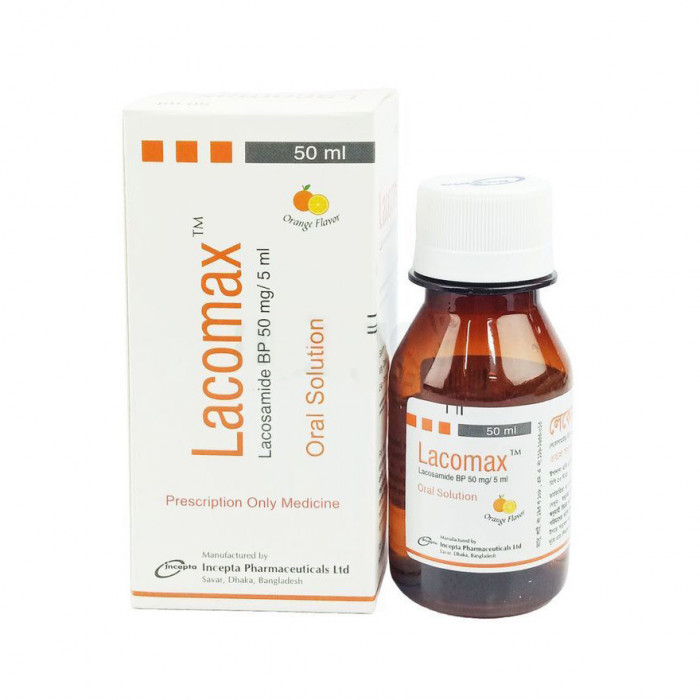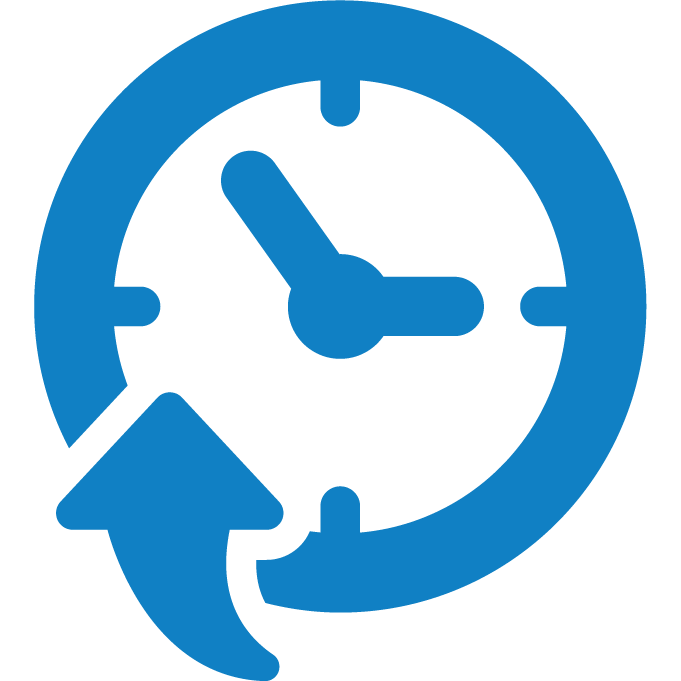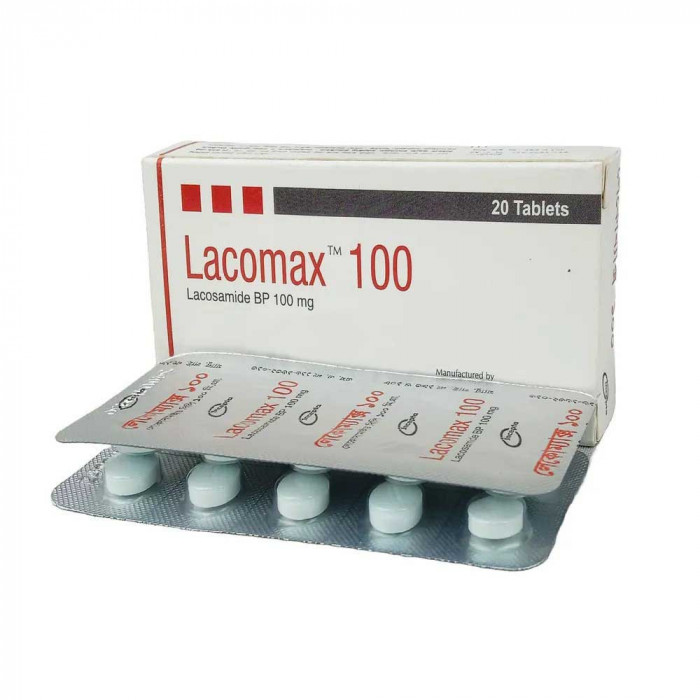
✔ 100% Authentic Product
👁️ Currently Viewing 1582
Lacomax is prescribed for:
- Treating partial-onset seizures in patients aged 1 month and older.
- Serving as adjunctive therapy in treating primary generalized tonic-clonic seizures in patients aged 4 years and older.
⚠ Always consult with a registered healthcare provider before using this medication.
Discount
Price: ৳ 165
MRP:
৳
176
6%
Off

100% Genuine Products, Guaranteed

Safe & Secure Payments, Always

Fast, Secure & Efficient Delivery

Proper Packaging
 Cash on Delivery - All over Bangladesh
Cash on Delivery - All over Bangladesh Regular Delivery - 12-24 Hours, Dhaka City* Charge Tk.39-59
Regular Delivery - 12-24 Hours, Dhaka City* Charge Tk.39-59 Regular Delivery - 24-48 Hours, Other Cities* Charge Tk.99-110
Regular Delivery - 24-48 Hours, Other Cities* Charge Tk.99-110
 ফ্রি ডেলিভারিঃ - ৯৯৯ টাকা+ অর্ডারে, ঢাকা
শহরে
ফ্রি ডেলিভারিঃ - ৯৯৯ টাকা+ অর্ডারে, ঢাকা
শহরে ফ্রি ডেলিভারিঃ - ২৯৯৯ টাকা+ অর্ডারে, ঢাকার
বাহিরে
ফ্রি ডেলিভারিঃ - ২৯৯৯ টাকা+ অর্ডারে, ঢাকার
বাহিরে
100% Genuine Products, Guaranteed
Safe & Secure Payments, Always
Fast, Secure & Efficient Delivery
Proper Packaging
 Cash on Delivery - All over Bangladesh
Cash on Delivery - All over Bangladesh Regular Delivery - 12-24 Hours, Dhaka City* Charge Tk.39-59
Regular Delivery - 12-24 Hours, Dhaka City* Charge Tk.39-59 Regular Delivery - 24-48 Hours, Other Cities* Charge Tk.99-110
Regular Delivery - 24-48 Hours, Other Cities* Charge Tk.99-110 ফ্রি ডেলিভারিঃ - ৯৯৯ টাকা+ অর্ডারে, ঢাকা
শহরে
ফ্রি ডেলিভারিঃ - ৯৯৯ টাকা+ অর্ডারে, ঢাকা
শহরে ফ্রি ডেলিভারিঃ - ২৯৯৯ টাকা+ অর্ডারে, ঢাকার
বাহিরে
ফ্রি ডেলিভারিঃ - ২৯৯৯ টাকা+ অর্ডারে, ঢাকার
বাহিরে
✅ Description:
Lacosamide's primary action is through the inhibition of sodium channels, which plays a role in reducing hyperexcitability of neurons. It's believed that Lacosamide selectively targets depolarized neurons (those with an abnormal resting potential) rather than those with normal potentials. The collapsin response mediator protein-2 (CRMP-2), which Lacosamide binds to, is involved in neuronal differentiation and axonal outgrowth, although its role in seizure control is still not fully understood.
Lacosamide's precise mechanism of action remains under study, but research suggests that it enhances the slow inactivation of voltage-gated sodium channels, stabilizing overexcited neurons and preventing repetitive neuronal firing.
✔️ Patients prescribed Lacosamide should be monitored for:
- Suicidal behavior
- Dizziness
- Ataxia
- PR interval prolongation
- Atrioventricular block
- Ventricular tachyarrhythmia
- Atrial fibrillation or flutter
- Syncope
- Phenylketonuria
- Multi-organ hypersensitivity
✔️ Dosage & Administration
For Partial-Onset Seizures (Monotherapy or Adjunctive Therapy) in Patients 1 Month and Older, and for Primary Generalized Tonic-Clonic Seizures (Adjunctive Therapy) in Patients 4 Years and Older:
Adults (≥17 years):
- Monotherapy: Initial dose of 100 mg twice daily (200 mg/day), titrated by 50 mg twice daily each week, with a maintenance dose of 150-200 mg twice daily (300-400 mg/day).
- Adjunctive Therapy: Initial dose of 50 mg twice daily (100 mg/day), titrated by 50 mg twice daily each week, with a maintenance dose of 100-200 mg twice daily (200-400 mg/day).
Pediatric Patients (≥50 kg):
- Initial dose: 50 mg twice daily (100 mg/day), titrated by 50 mg twice daily weekly.
- Maintenance dose: 100-200 mg twice daily (200-400 mg/day).
Pediatric Patients (30-50 kg):
- Initial dose: 1 mg/kg twice daily (2 mg/kg/day), titrated by 1 mg/kg twice daily (2 mg/kg/day) weekly.
- Maintenance dose: 2-4 mg/kg twice daily (4-8 mg/kg/day).
Pediatric Patients (6-30 kg):
- Initial dose: 3-6 mg/kg twice daily (6-12 mg/kg/day).
Pediatric Patients (<6 kg):
- Initial dose: 3.75-7.5 mg/kg twice daily (7.5-15 mg/kg/day).
Lacosamide tablets and oral solution can be taken with or without food.
✔️ Pediatric Use:
- Safety and effectiveness in patients under 1 month for partial-onset seizures and under 4 years for primary generalized tonic-clonic seizures have not been established.
✔️ Renal Impairment:
No dose adjustment is needed for mild to moderate impairment; however, reduce dosage by 25% for severe renal impairment or end-stage renal disease.
✔️ Geriatric Use:
Start at the lower end of the dosing range.
✔️ Hepatic Impairment:
For mild to moderate hepatic impairment, reduce the dose by 25%. Lacosamide is not recommended for those with severe hepatic impairment.
✔️ Common side effects of Lacomax include:
- Dizziness
- Headache
- Somnolence (drowsiness)
- Ataxia (lack of coordination)
- Tremor
- Nausea
- Vomiting
- Fatigue
- Diplopia (double vision)
- Blurred vision
✔️ Interactions
- Renal or hepatic impairment: Dose reduction may be required for patients with severe renal or hepatic impairment, especially those on strong CYP3A4 and CYP2C9 inhibitors.
- Medications affecting cardiac conduction (e.g., sodium channel blockers, beta-blockers, calcium channel blockers, potassium channel blockers) should be used with caution, especially those that can prolong the PR interval.
✔️ Contraindications
Lacosamide is contraindicated for individuals with a known hypersensitivity to Lacosamide or any of its components.
✔️ Pregnancy & Lactation
- Pregnancy: Lacosamide should only be used during pregnancy if the potential benefit justifies the potential risk to the fetus, as adequate and well-controlled studies are lacking.
- Lactation: Lacosamide is excreted in human breast milk. The benefits of breastfeeding should be weighed against the unknown risks of infant exposure to Lacosamide.
✔️ Storage Conditions
- Store below 30°C.
- Keep the medication away from light and out of the reach of children.
⚠️Disclaimer:
At ePharma, we’re committed to providing accurate and accessible health information. However, all content is intended for informational purposes only and should not replace medical advice from a qualified physician. Please consult your healthcare provider for personalized guidance. We aim to support, not substitute, the doctor-patient relationship.








